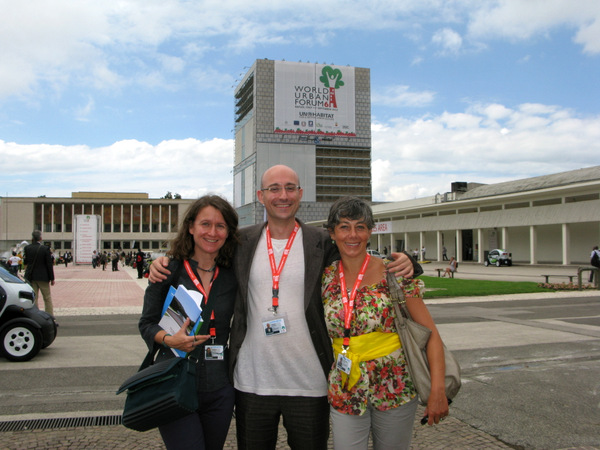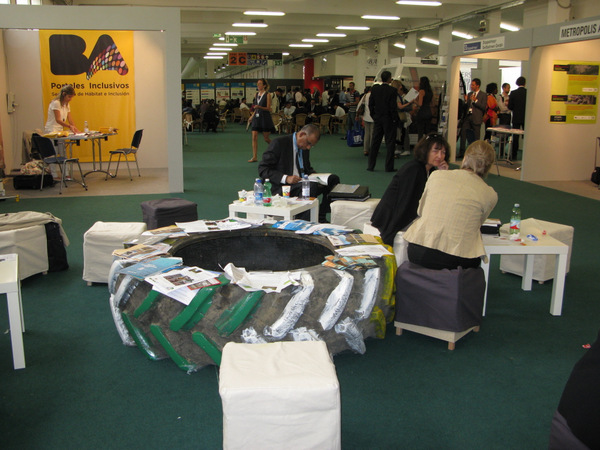Naples, Italy, September 1st – 7th, 2012
An ISB delegation, consisting of Angelica Fortuzzi, Angela Maria Pezzilli, and Stefano Serafini, participated in the work of the sixth UN Habitat World Urban Forum (http://www.unhabitat.org/downloads/docs/ProgrammeWUF6.pdf), in Naples, from the 1st to the 7th of September 2012. We met colleagues from all over the world, and discussed relevant urban issues, such as the geometry of networks and transport, urbanism and the social divide, gentrification, biophilia, and placemaking. In particular, we established relations with the South American network “Cómo vamos” (http://reddeciudadescomovamos.org), aimed at enhancing people’s urban awareness regarding life quality, and using it to put pressure on the media, politics, and government. They strongly believe in participation, in order to achieve a better urban environment, and are very in a reflection about criteria to be used for the correct questioning of people regarding a fair and sustainable future for cities. Among these, Global Housing Indicators, as proposed by the project Habitat for Humanity, deal with slum clearance and houses titling.
More theoretical discussions have been developed with South African colleagues, engaging the study and mapping of the metabolism of cities. Such a metabolism is viewed in terms of material flows, such as Oxygen income and CO2 output, in terms of the entire combustion process of a city, as well as how these flows are influenced by immaterial elements and stakeholder interests, to name but a few. Looking at these metabolic maps, it is interesting to find detailed “forms” that bring unexpected information. For example, a city is found to consume more food in the city centre and more building materials in the suburbian areas, giving rise to specific flow maps, and offering a new version of urban economics and social issues. Despite of the use of term “metabolism”, these scholars tend to refute the idea of the city as an organism, because they still refer to such a concept in terms used at the beginning of the 20th century. What if we were to consider organisms in terms of post-selection and systems biology? An integrated eco-urbanism could be the result of this vision.
An interesting confrontation resulted from our participation in the Project for Public Spaces (http://www.pps.org) workshop concerning placemaking, as ISB is engaged in a similar approach, but deals specifically with scientific research regarding how and why some particular features make a place attractive. PPS has a direct and concrete approach, fundamentally based on common sense, and we could appreciate their techniques and attitudes.

(Angelica Fortuzzi, Stefano Serafini and Angela M. Pezzilli)
After following a wide range of different discussions, it was clear that the core of the debate regarding liveable urban environments and sustainable cities is faced in African, Asian and South American countries.In other words, in those parts of the world where strong inequalities still exist, and wherediscussions are particularly focused on the right to shelter for everybody. The urban situation in Western countries, on the other hand, appears to be less problematic and pressing, and is restricted to some particular areas.

However, common issues emerged from the debates, the main one being that people are key to the process of space making. Therefore, the importance of participation practices and collaborative design and planning in the urban decision-making processes should be stressed.
